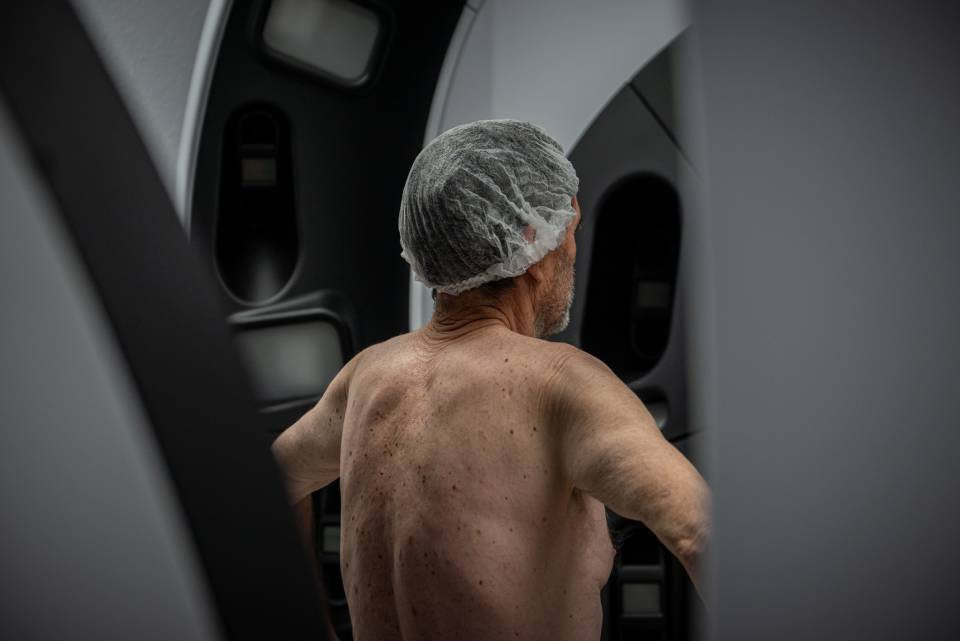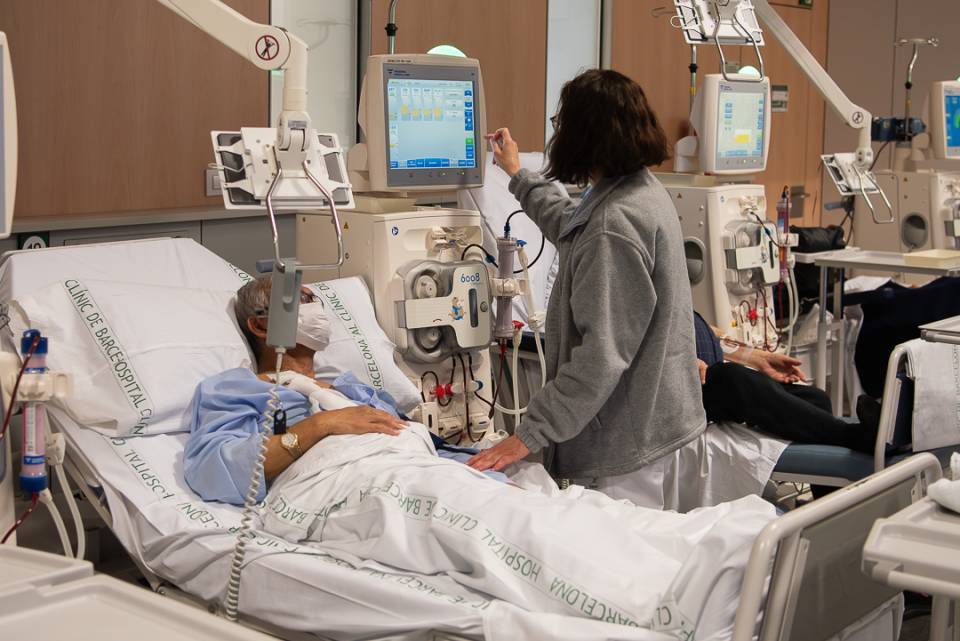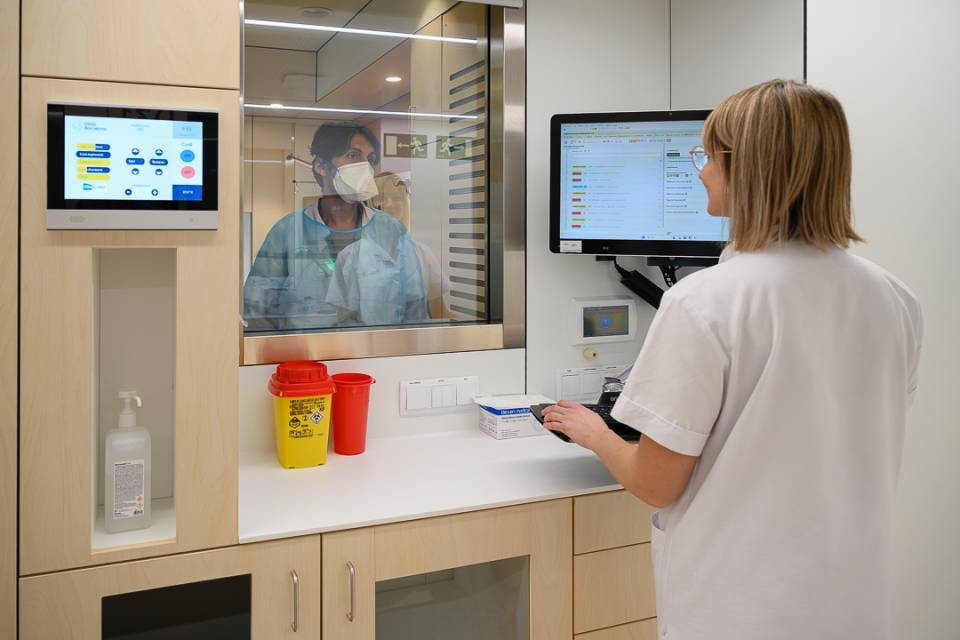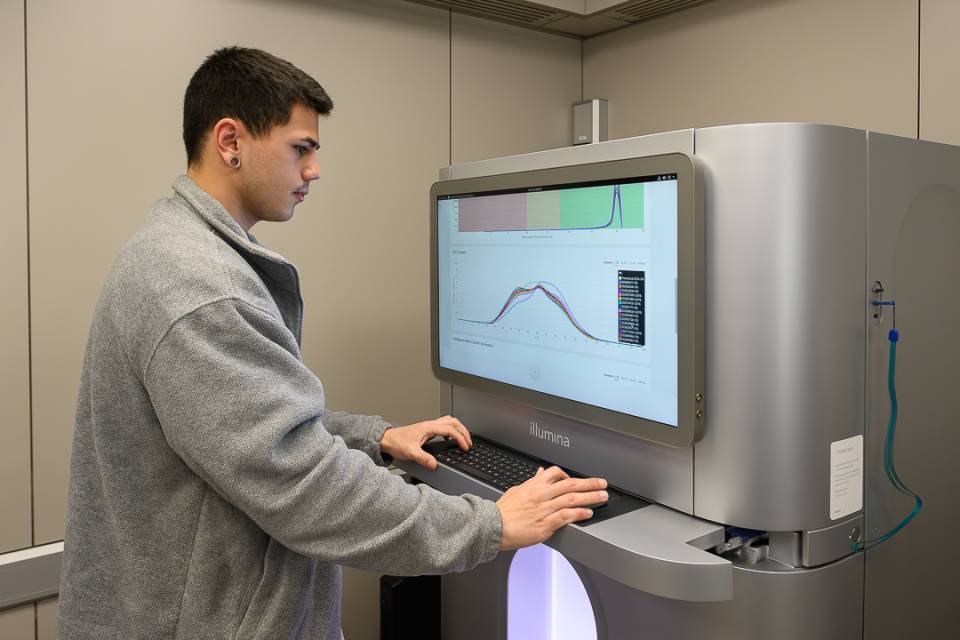This is one of the projects carried out by the Dermatology Service, led by Dr. Susana Puig, head of the service, and Dr. Josep Malvehy, coordinator of Innovation at the Institute of Medicine and Dermatology at the Hospital Clínic. This robot is used at the Hospital Clínic in patients within the Hospital’s area of influence who are at a high risk of melanoma or who have risk factors for developing this cancer. The Hospital Clínic is the first hospital in Spain to have a robot of these characteristics, and it is currently only available in a few high-tech centres across the globe.
This equipment has 98 cameras and cross-polarized lighting capable of capturing images of the whole body surface and offering specialists a 3D view of the patient. The new robot takes photos of the whole body in three dimensions in under one second, so that each lesion can be assessed and analysed in a few minutes.
This photographic analysis allows for a global view of the skin surface. Moreover, thanks to this technological equipment, a body map can be created in order to record and monitor the evolution of lesions, which is very useful for detecting any suspicious changes rapidly and clearly. This is a great step forward because, the sooner any changes that are likely to be skin cancer are detected, the sooner an effective diagnosis and treatment can be established.
The Vectra WB360 robot shows the evolution in the patient’s pigmentation and allows the whole body to be assessed, applying a computerized view to detect the patient’s lesions. Dr. Josep Malvehy says that these artificial intelligence tools are at a research and evaluation phase, and in the future could help our professionals to improve patient diagnosis. It is thought that it could be used with 20 patients every day.
According to Dr. Susana Puig, head of the Hospital Clínic Dermatology Service, “it is vital to be able to diagnose skin cancers early, which is why we need the best technology at the service of patients”. “The robot must help professionals to diagnose better and faster”, she concludes.
At the Hospital Clínic de Barcelona, through the Dermatology Service, 1,600 skin cancers are diagnosed each year. A total of 300 new cases of melanoma are treated, 150 of which are diagnosed at the Hospital Clínic. The implementation of this detection and monitoring robot makes this process much faster and more accurate and, at the same time, allows different diagnostic systems to be integrated into a single system. In the past, lesions were photographed manually by professionals.
Skin cancer is the most common cancer in our population. The incidence in Spain is 300 cases per 100,000 inhabitants per year. One in five people will develop skin cancer in their lifetime. It is estimated that 50% of people over the age of 65 will suffer some kind of skin cancer, and 25% will develop two or more malignant skin tumours in their lifetime.
Fortunately, skin cancer has a great advantage over other cancers: it appears externally and manifests in the form of asymmetrical, large spots or moles that tend to increase in size. If it is detected in the initial stages, this cancer is curable, which is why early detection is essential.




